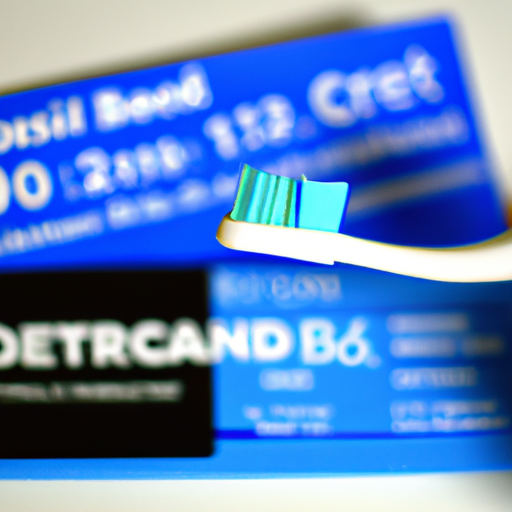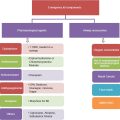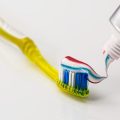So, you find yourself in need of emergency dental treatment, huh? Well, don’t panic just yet. It can be a stressful situation, but luckily, there are several payment options available to help you handle the costs. Whether you’re dealing with a sudden toothache or a broken tooth, this article will give you valuable insights into the different payment options that can make emergency dental treatment more manageable for you. From dental insurance and flexible payment plans to healthcare credit cards, we’ll explore the various ways you can pay for your necessary dental care. No need to fret about the financial side of things – we’ve got you covered.
Insurance
Private Dental Insurance
Private dental insurance can be a valuable option for covering emergency dental treatment. It generally provides coverage for a range of dental procedures, including those that are considered emergency treatments. However, it is important to carefully review the terms and conditions of your private dental insurance policy to understand the scope of coverage it offers for emergency dental treatment. Some plans may have specific limitations or require pre-authorization for emergency procedures. Contact your insurance provider to get detailed information about the coverage and any out-of-pocket costs you may need to bear.
Medicaid or Medicare
For individuals who qualify, Medicaid or Medicare can be an excellent option to help cover emergency dental treatment costs. Medicaid provides health insurance coverage for individuals and families with limited income and resources, and it includes dental benefits in some states. Medicare, on the other hand, is primarily for individuals aged 65 and older or those with certain disabilities. While Medicare doesn’t typically cover routine dental care, it may cover dental services in certain emergency situations. Check with your local Medicaid office or Medicare representative to determine your eligibility and the dental services covered under these programs.
Discount Dental Plans
Another option for managing emergency dental treatment expenses is through discount dental plans. These plans allow you to access dental services at reduced rates by paying an annual or monthly fee. While they are not insurance plans, they can provide substantial discounts on dental treatments, including emergency procedures. It’s important to note that discount dental plans usually require you to visit participating dentists in their network. Before enrolling in a discount dental plan, ensure that it has dentists in your area and that the savings it offers are significant enough to make it a worthwhile investment.
Government Assistance Programs
Medicaid
Medicaid is a joint federal and state program that provides healthcare coverage to individuals and families with low income. While dental coverage under Medicaid varies by state, many states include emergency dental services as part of their Medicaid benefits. If you are eligible for Medicaid, it can be a valuable resource for affording emergency dental treatment. Contact your local Medicaid office to find out about the specific dental services covered under your state’s program.
Medicare
Medicare is a federal health insurance program primarily intended for individuals aged 65 and older or those with certain disabilities. While Medicare typically does not cover routine dental care, it may provide limited coverage for emergency dental services in certain situations. Coverage for emergency dental treatment may depend on the severity of the emergency, whether hospitalization is required, and the specific circumstances involved. Check with Medicare or your Medicare representative to understand the emergency dental services that may be covered under the program.
CHIP
The Children’s Health Insurance Program (CHIP) is a government assistance program that provides low-cost health coverage for children in families who earn too much income to qualify for Medicaid but cannot afford private insurance. Dental coverage under CHIP varies by state, but many states include emergency dental services as part of their program. If you have children who require emergency dental treatment, CHIP can be a helpful resource to cover the costs. Contact your local CHIP office to find out about the dental services covered and the eligibility requirements.
Credit Cards and Personal Loans
Credit Cards
Using a credit card can be a temporary solution to manage emergency dental treatment costs. If you have an available credit limit, you can use your credit card to pay for the treatment upfront and then gradually pay off the balance over time. However, it’s important to consider the interest rates and fees associated with using a credit card for healthcare expenses. If you cannot pay off the full amount by the due date, you may end up accruing high-interest charges. Before using a credit card, ensure that you have a clear plan to repay the debt and consider exploring other options if you are unable to manage the associated costs.
Personal Loans
Taking out a personal loan can be another option for financing emergency dental treatment. Personal loans can provide a lump sum of money that can be used to cover the upfront costs of the treatment. You can then repay the loan in fixed monthly installments over a specified period. However, it’s important to carefully review the terms and conditions of the loan, including the interest rate and any associated fees. Make sure you can comfortably afford the monthly payments before committing to a personal loan. Comparing different loan options and shopping around for the best interest rates can help you find the most affordable option.
Medical Credit Cards
Some financial institutions offer specialized medical credit cards that are specifically designed to cover healthcare expenses, including emergency dental treatment. These cards often come with promotional offers, such as interest-free periods or low-interest rates, to make it more manageable to pay for medical expenses. However, it is crucial to thoroughly research and understand the terms and conditions of medical credit cards before applying. Be aware of any potential hidden costs or fees, and be sure to make timely payments to avoid high-interest charges once any promotional offers expire.
Flexible Spending Accounts (FSAs)
What is an FSA?
A Flexible Spending Account (FSA) is a type of savings account that allows individuals to set aside pre-tax dollars to cover eligible medical expenses. FSAs are offered by some employers as part of their employee benefits package. The funds in an FSA can be used for a wide range of medical expenses, including emergency dental treatment. The advantage of an FSA is that the money contributed is not subject to income tax, therefore providing some savings. However, it’s important to note that FSAs typically have a “use it or lose it” policy, meaning any funds that aren’t used by the end of the plan year may be forfeited. Be sure to plan accordingly and estimate your emergency dental expenses accurately before contributing to an FSA.
Using an FSA for Emergency Dental Treatment
If you have an FSA and require emergency dental treatment, you can use the funds in your account to pay for the expenses. Before using your FSA, check whether emergency dental treatment is considered an eligible expense under your plan. If it is, you can submit the necessary documentation, such as receipts or invoices, to your FSA administrator for reimbursement. Keep in mind any deadlines for submitting claims and ensure that you carefully follow your FSA’s guidelines to avoid any potential issues with reimbursement.
Health Savings Accounts (HSAs)
What is an HSA?
A Health Savings Account (HSA) is another type of tax-advantaged savings account designed to help individuals cover qualified medical expenses. HSAs are available to individuals with a high-deductible health insurance plan. The contributions made to an HSA are tax-deductible, and the funds can be used for a wide range of medical expenses, including emergency dental treatment. Unlike FSAs, HSAs do not have a “use it or lose it” policy, and the funds can roll over from year to year, allowing for long-term savings. To open an HSA, you must meet certain eligibility requirements, including having a high-deductible health plan.
Using an HSA for Emergency Dental Treatment
If you have an HSA and require emergency dental treatment, the funds in your account can be used to cover the associated expenses. Similar to FSAs, it’s important to check whether emergency dental treatment is considered a qualified expense under your HSA plan. If it is, you can use your HSA debit card or make a reimbursement claim for the expenses incurred. Keep in mind that you will need to keep records of your dental expenses and follow any guidelines provided by your HSA administrator to ensure proper reimbursement.
Patient Financing
CareCredit
CareCredit is a healthcare credit card that can be used to cover a variety of medical expenses, including emergency dental treatment. It offers special financing options, such as interest-free periods or low monthly payments, to make it easier for individuals to manage their healthcare costs. CareCredit works with a network of healthcare providers, including dentists, to provide convenient payment options. Before applying for CareCredit, carefully review the terms and conditions, including the interest rates and fees. Make sure you understand the repayment terms and consider your ability to make the required payments.
LendingClub
LendingClub is an online platform that connects borrowers with investors to provide personal loans for various purposes, including healthcare expenses. It can be a viable option for individuals in need of emergency dental treatment who require a more flexible financing option. LendingClub offers fixed-rate loans with predictable monthly payments, making it easier to budget for healthcare expenses. However, it’s essential to compare interest rates and fees from different lenders and consider your credit history before applying for a loan through LendingClub or any other similar platform.
GreenSky
GreenSky is another patient financing option that works with a network of healthcare providers to offer loans for medical expenses, including emergency dental treatment. They provide installment loans with competitive interest rates and flexible repayment terms. GreenSky streamlines the application process with fast approvals and same-day funding, making it convenient for patients in need of immediate dental care. As with any financing option, it’s important to carefully review the loan terms, including any potential fees or penalties, and ensure that the monthly payments fit your budget.
Dental Schools and Clinics
Low-Cost or Sliding-scale Clinics
Low-cost or sliding-scale clinics are community-based healthcare facilities that offer dental services at reduced rates based on income and other factors. These clinics are often run by nonprofits or supported by grants, and they are a valuable resource for individuals in need of emergency dental treatment but who may not have insurance or the financial means to afford private care. Contact local public health departments or community organizations to inquire about low-cost or sliding-scale dental clinics in your area. They may have specific eligibility requirements or appointment processes that need to be followed.
Dental School Clinics
Dental school clinics are educational facilities where dental students provide supervised dental treatment at a reduced cost. These clinics have licensed faculty members overseeing the students and ensuring the quality of care. While treatment may take longer compared to a private dental practice, dental school clinics can offer significant cost savings for emergency dental treatment. Dental schools are typically associated with universities and are found in many cities and towns. Contact the nearest dental school to inquire about the availability of emergency dental services and the associated costs.
Charitable Organizations and Nonprofits
Free or Low-Cost Clinics
Numerous charitable organizations and nonprofit clinics provide free or low-cost dental services to individuals who cannot afford traditional dental care. These clinics are typically staffed by volunteer dentists and dental professionals who generously donate their time and expertise. While availability may vary, reaching out to organizations such as Mission of Mercy or the dental division of your local United Way can help you identify free or low-cost dental clinics in your area that may offer emergency treatment. Be prepared to provide details about your financial situation to determine your eligibility for these services.
Dental Assistance Programs
Dental assistance programs are initiatives created by charitable organizations or nonprofits that aim to provide financial assistance for individuals who need emergency dental treatment but lack the means to afford it. These programs may offer grants, scholarships, or other forms of financial aid to cover a portion or all of the treatment costs. Research local dental assistance programs, or consider reaching out to national organizations such as the Dental Lifeline Network or the Oral Health America Foundation, to inquire about available resources and requirements for receiving financial assistance.
Negotiating Payment Plans
Discussing Payment Options with the Dentist
In some cases, dentists may be open to discussing payment options or creating individualized payment plans for patients in need of emergency dental treatment. Before receiving treatment, have an open and honest conversation with your dentist about your financial situation and inquire about any possible payment arrangements. Dentists understand that unexpected dental emergencies can be financially burdensome, and they may be willing to work with you to find a solution that accommodates your needs. Keep in mind that not all dentists may offer payment plans, and the availability may vary depending on the specific practice.
Setting Up a Payment Plan
If your dentist agrees to a payment plan, it’s important to establish clear terms and expectations. A payment plan typically involves dividing the total treatment cost into manageable monthly installments. Be sure to discuss the duration of the payment plan, the amount of each payment, any interest or fees that may be charged, and the consequences of missed or late payments. It’s important to review and sign a written agreement that outlines the terms of the payment plan to avoid any misunderstandings. By setting up a payment plan, you can spread out the financial burden of emergency dental treatment while still receiving the necessary care.
Emergency Funds and Savings
Using Personal Savings
Having personal savings can provide a safety net when it comes to unexpected expenses, such as emergency dental treatment. If you have money set aside specifically for emergencies, you can use these funds to cover the upfront costs of the treatment. It’s important to evaluate your savings and assess whether using them for dental emergencies is a viable option. Consider the potential impact on your overall financial stability and ensure that you still have sufficient savings for other unforeseen circumstances. Keep in mind that continually replenishing your emergency savings is crucial to ensure future financial security.
Creating an Emergency Fund
If you don’t have personal savings specifically designated for emergencies, it’s a good idea to start building an emergency fund. An emergency fund can provide a financial cushion to help cover unexpected dental or medical expenses in the future. Even setting aside a small amount from each paycheck or allocating a portion of your monthly budget to an emergency fund can help you gradually build up savings. Aim to save at least three to six months’ worth of living expenses to ensure you have enough funds to rely on during emergencies. By consistently contributing to an emergency fund, you can better prepare for unexpected dental treatment needs. Remember that building an emergency fund takes time, discipline, and a commitment to regular saving.
In conclusion, emergency dental treatment can be a financially daunting situation. However, there are various payment options available to help manage the costs. From insurance options like private dental insurance and Medicaid/Medicare to credit cards, personal loans, and patient financing programs, there are solutions for different financial situations. Additionally, flexible spending accounts (FSAs) and health savings accounts (HSAs) offer tax advantages, while dental schools, low-cost clinics, and charitable organizations provide affordable or free dental care. Negotiating payment plans directly with your dentist and utilizing personal savings or creating an emergency fund can also help alleviate the burden of emergency dental treatment costs. It’s important to explore the options available, thoroughly understand the terms and conditions, and choose the best payment option that aligns with your financial circumstances and long-term goals. Remember, your oral health is essential, and there are resources to help you access the care you need, even in emergencies.












